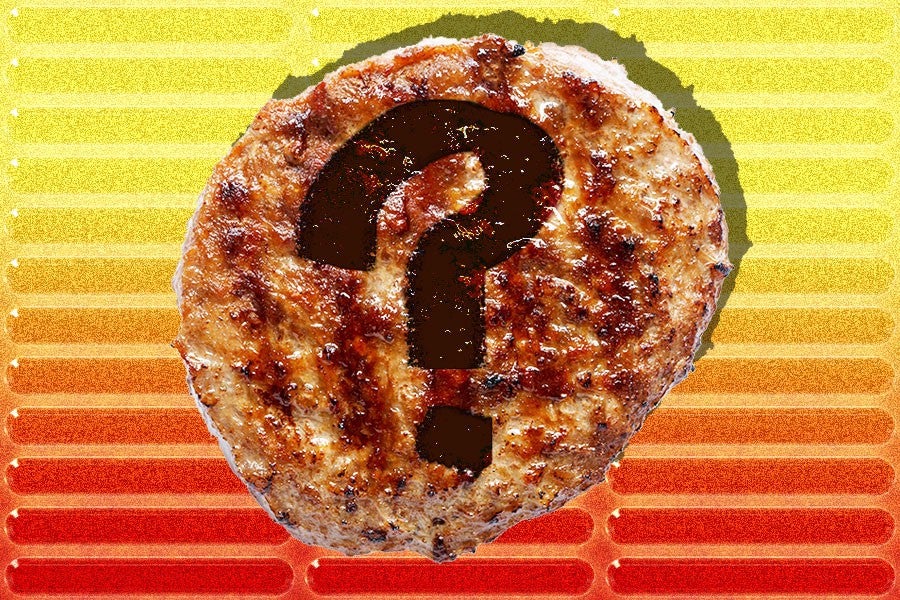If there was a Big Pharma equivalent for grilling, they’d probably have you believe that grill marks are essential to the flavor of a prime USDA steak. After all, every advertisement you’ve ever seen about grilling lingers upon crosshatched grill marks. And it makes sense, right? Those marks look so great, they’re borderline erotic. But do they actually enhance the flavor?
Short answer: Nope!
“When it comes to meats — and many other foods — the goal is golden-to-brown color on as much surface as possible,” says Meathead Goldwyn, author of Meathead, The Science of Great Barbecue and Grilling and self-proclaimed barbecue whisperer. The brown crusts on grilled meat are the most flavorful part due to something called the Maillard reaction, where, says Goldwyn, “Heat changes the structure of amino acids, proteins and sugars, creating hundreds of new tasty compounds.”
But what about the much darker crosshatching, the pride of every serious griller? “Those beautiful grill marks are merely superficial branding, just coloring on the surface. Like the freckles on Lindsay Lohan, they’re cute, but lacking substance,” Goldwyn says. This, he claims, is why all the truly great steakhouses use broilers rather than grills. “The flames are above the meat, that way they can get brown all over. That’s why grill marks don’t make me salivate — I want brown all over.”
(There’s also the little fact that, when it comes to meats and carbs, grill char may give you cancer.)
Still, Goldwyn says there are other instances in which you actually do want grill marks to help enhance the flavor of your food.”When you have thin foods like asparagus and bell peppers, it’s hard to get the exterior browned before the interior is overcooked. This is when you want grill marks.”
So there you have it: When it comes to grill marks, save the stripes for impressing your vegetarian audience.

